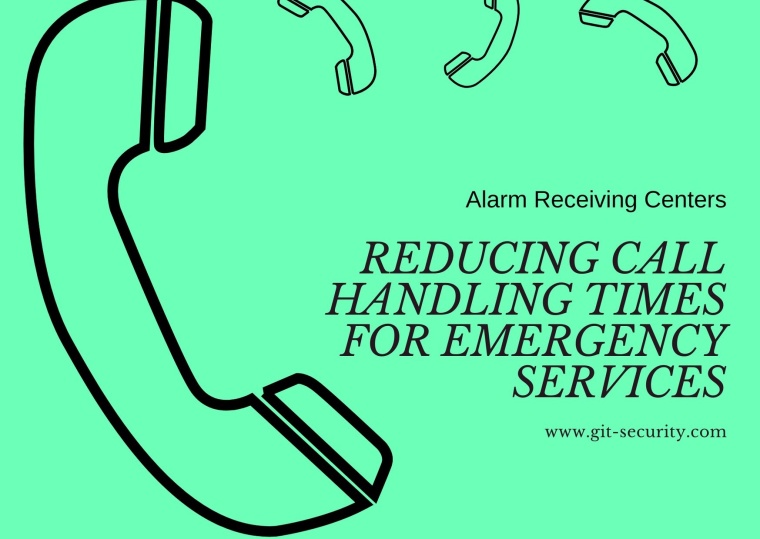Reducing Call Handling Times for Emergency Services and Alarm Receiving Centres
Electronic Call Handling Operation (Echo) is the name of a new project. A project where the British Security Industry Association (BSIA), the Fire Industry Association (FIA) and th...


Electronic Call Handling Operation (Echo) is the name of a new project. A project where the British Security Industry Association (BSIA), the Fire Industry Association (FIA) and the Fire & Security Association (F&SA) will be playing a key role in development. The project aims to deliver a centralised fully automated electronic call handling service to reduce pressure on the emergency services and alarm receiving centres (ARCs) by reducing their call handling times and errors that can occur from manual response handling.
The fire and security industries had long felt the development of Fire and Security alarm transfer from protected premises to emergency services were falling behind the technical advances being made in today’s digital communications. Three industry trade associations were keen to see more effective working practices: The BSIA, the FIA and the F&SA and set up the Electronic Call Handling Operation (Echo).
Eliminating Human Error
Echo will generate significant savings to the emergency services as it eliminates human error, a common issue that was brought to forefront of the discussions between National Police Chiefs Council (NPCC) and the private security industry following the Hatton Garden incident in London in 2015. Following those discussions, the decision was made to implement an electronic transfer process.
The NPCC set a target of 2020 for all Alarm Receiving Centres (ARCs) to be operating on an electronic platform. During the review it became clear that the best way to connect to these centres would be via the Government’s PSN network and the police PNN system; this, together with ways to format and translate the data, have formed the key to the two possible options presented to the Echo board. Both possible solutions have been beta tested and have been proven to work. Advice was received from a procurement specialist at the Home Office who has assisted the Echo board in moving to place a supply contract.
These pilot schemes have proved that Echo will improve efficiencies and a number of alarm companies and police forces are now accepting electronic transfers, including: Metropolitan, Essex and Avon & Somerset and Northamptonshire Police.
Alongside this, the Echo management team are working on the business process and method that will be used for an ARC to easily connect their customers to the Echo system.
What are Echo System Benefits?
- Fast alarm verification: At present most alarm calls are passed via a voice call from the ARC to the blue light responder. This is slow and resource intensive, passing these calls from machine to machine will speed the process up thereby reducing response times.
- Accurate incident Information: The system will also reduce the potential for human error, such as mishearing an address or transliterating an incident type, ensuring accurate information is transmitted automatically.
- Automatic event incident acknowledgment from ‘Blue light’ service to ARC: ARC’s currently ask for the incident number for their event log. With electronic transfer this can become an automatic function again reducing time and cost on both sides.
- Improved key holder response from ARC to ‘Blue light’ responder: Responders to the event normally wish to know the key holder details and their ETA at the site. Currently, this is a very manual process, but can, following research, be incorporated into the electronic call handling process.
- Possibility to let ARC have close down code automatically: At present, the ARC passes a call but often does not know the result of the event i.e. was this a false alarm or genuine event? Having this information would help the ARC work with the system maintainer to reduce unwanted alarms.
- Will enable URN status machine to machine checks to be updated regularly: Police URNs may be withdrawn or suspended, but the ARC is not always aware of this, if a regular data base update is carried out machine to machine this will reduce unnecessary calls.
- Additional situation information traffic may be passed: Any additional information about an event is often available from today’s alarm system i.e. ‘roller shutter door rear premises open’ or ‘fire 3rd floor temperature 80 degrees’. Passing this in a practical and timely manner is difficult at the moment, but once linked machine to machine it will be much easier to achieve.
- Enable possible cloud-based URN applications to be made: The URN application and payment system being operated currently does not make use of most of potential benefits that a cloud-based application process may offer. Again, if implemented the URN can be auto linked to both, the ARC and the ‘Blue light control systems’.
- Further development may see the ability to pass live audio/video to the responder: This may be a further development of the additional situation information, with more and more video images becoming available live streaming from the event to the responder may be offered and routed via the Echo system.
As you have probably noticed, all of the above is based on security systems. Fire Alarm systems have exactly the same issues when it comes to handling alarm signals to central emergency service Centres and ARC’s. Work on the fire side of the operation will logically follow on upon completion of beta tests.
Business Partner
Fire Industry Association (FIA)Oldfield Road
TW12 2HD Hampton
UK
most read

Machine & plant safety: The winners of category A at the GIT SECURITY AWARD 2026
GIT SECURITY AWARD 2026: Machine & plant safety - an overview of the most innovative solutions

Security management, building security & perimeter protection: the winners of category E at the GIT SECURITY AWARD 2026
GIT SECURITY AWARD 2026: Security management, building security & perimeter protection - an overview of the most innovative solutions


Is Your Venue Ready for Martyn’s Law?
Martyn’s Law demands stronger security by 2027. Is your venue prepared to protect and respond?

GIT SECURITY AWARD 2026 - The winners have been announced!
GIT SECURITY AWARD 2026: The best safety and security solutions of the year - now an overview of all winners








